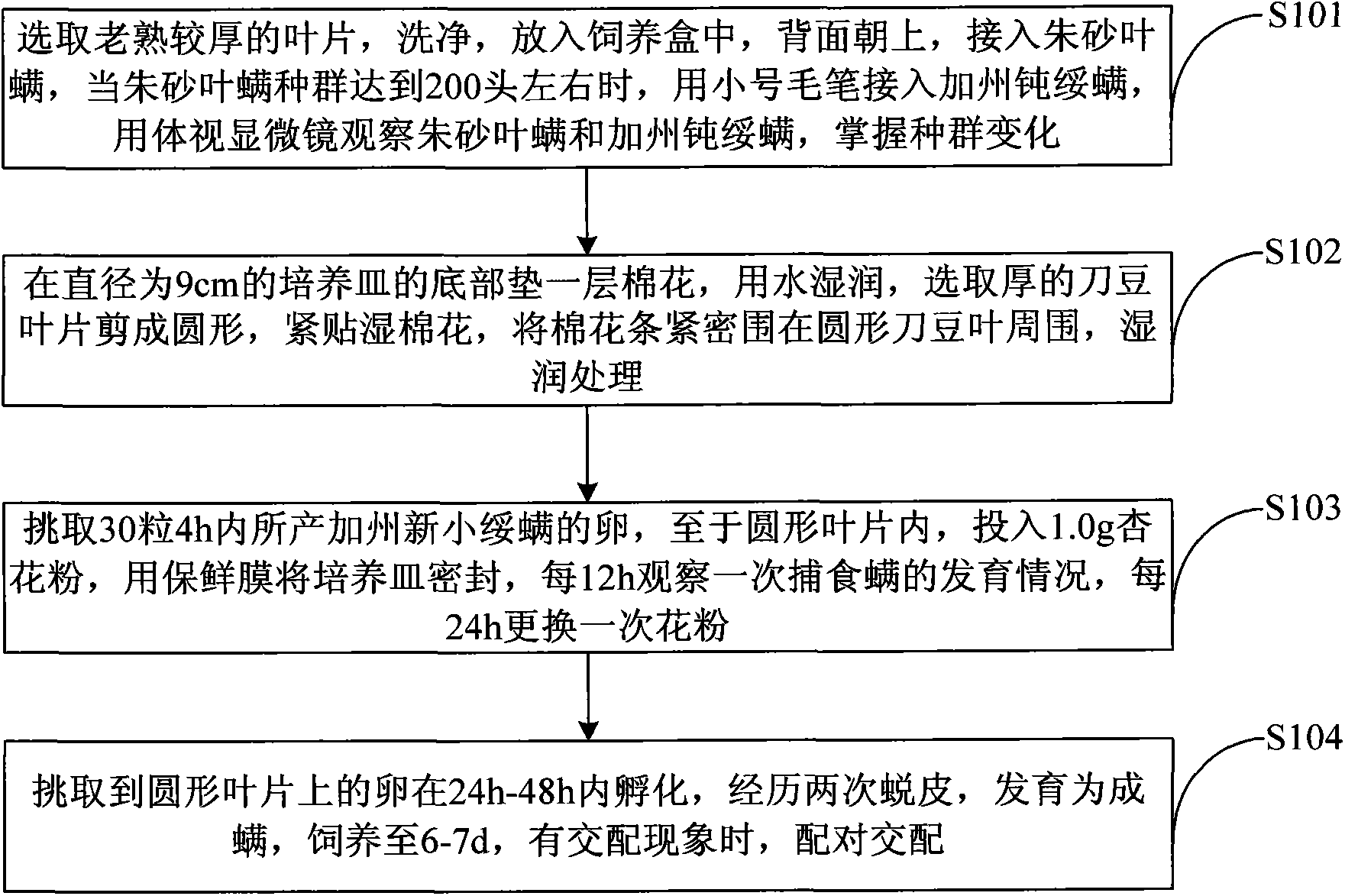Method for breeding neoseiulus californicus through apricot blossom pollen
A technology for small seiid mites and pollen, which can be applied in animal husbandry and other directions, and can solve the problems of inability to mate and lay eggs, and inability to complete sub-generation reproduction.
- Summary
- Abstract
- Description
- Claims
- Application Information
AI Technical Summary
Problems solved by technology
Method used
Image
Examples
Embodiment Construction
[0019] In order to make the purpose, technical solution and advantages of the present invention more clear, the present invention will be further described in detail below in conjunction with the accompanying drawings and embodiments. It should be understood that the specific embodiments described here are only used to explain the present invention, not to limit the invention.
[0020] figure 1 It shows the implementation process of the method for propagating Neoseius californica with apricot pollen provided by the embodiment of the present invention.
[0021] This adopts apricot pollen to propagate the method for Neoseius californica comprising the following steps:
[0022] Step S101, select mature and thicker leaves, wash them, put them into a breeding box with the back facing up, and insert Tetranychus cinnabarinus. When the population of Tetranychus cinnabarinus reaches about 200, use a small brush to insert Tetranychus cinnabarinus. For mites, use a stereo microscope to...
PUM
 Login to View More
Login to View More Abstract
Description
Claims
Application Information
 Login to View More
Login to View More - R&D
- Intellectual Property
- Life Sciences
- Materials
- Tech Scout
- Unparalleled Data Quality
- Higher Quality Content
- 60% Fewer Hallucinations
Browse by: Latest US Patents, China's latest patents, Technical Efficacy Thesaurus, Application Domain, Technology Topic, Popular Technical Reports.
© 2025 PatSnap. All rights reserved.Legal|Privacy policy|Modern Slavery Act Transparency Statement|Sitemap|About US| Contact US: help@patsnap.com

